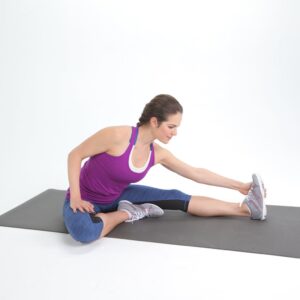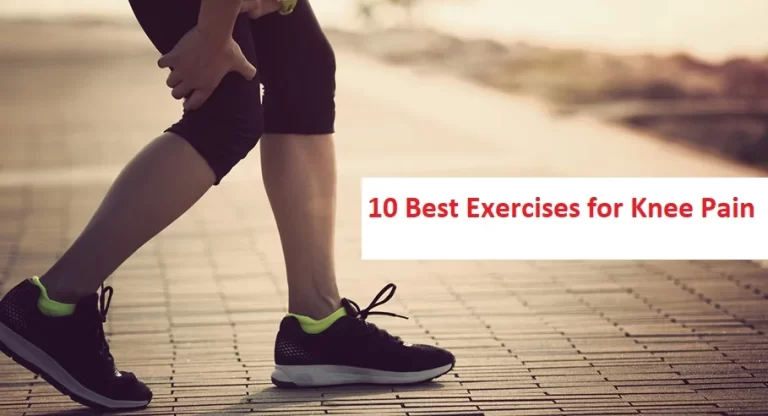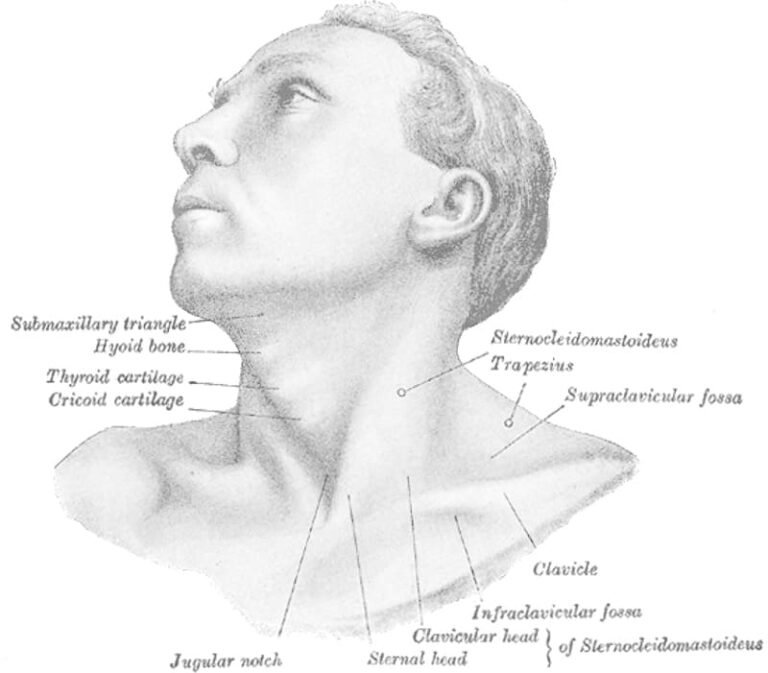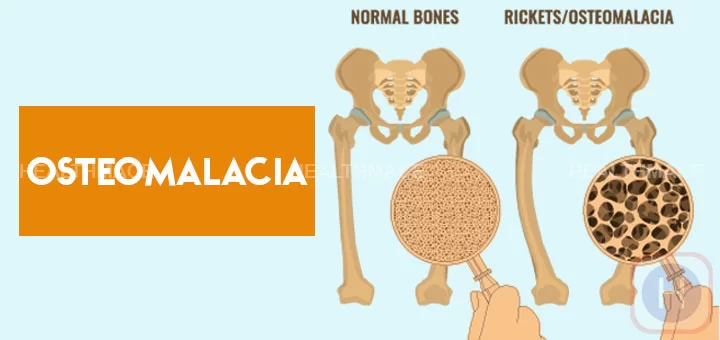What are the flexibility exercises?
What is a flexibility exercise?
The flexibility exercise is an ability of the joints or the group of joints, as well as muscles to move through the range of motion effectively unrestricted & pain-free. There are so several benefits of flexibility, & finding increased flexibility will drastically increase the quality of life in the long run.
Flexibility can seem elusive to most, reserved for those only in sports that require it. Maybe it seems like something that only a few individuals are born with, as well as they, cannot achieve it. But that is a common misconception due to the fact that anyone may become flexible through flexibility exercises!
Some benefits of Flexibility Exercise
A need to be flexible is not reserved for athletes, but for every individual, especially as they age. The biggest benefits are mobility as their age, muscle recovery, as well as decreasing the risk of injury, but there are so many more.
- Mobility
The largest cause of senior citizens needing help as they age, & losing their independence, is lack of mobility. What many do not realize is that this stems from a lifetime of stiffness and tension as well.
When the body may not move in its full range of motion as a young individual, the range of motion will only continue to reduce as you age. The connective, as well as soft tissue, grows tighter & tighter, which makes it progressively harder to move. If the person does not stretch out these muscle fibres, ligaments, as well as joints, eventually it will restrict the movement to the point that you can no longer move on your own. - Muscles Flexibility as well as Recovery
Another benefit of flexibility is improved muscle recovery.
Whether you work out frequently, do repetitive motions throughout the day, or find that the muscles are just stiff & sore in
general, flexibility may assist to speed up this recovery time. When the muscle groups are able to find release, they will not feel as sore & will be able to continue to do whatever you do, pain-free, as well as with no muscle soreness.
It can also assist in greatly increasing athletic performance overall. - Decreases Injury
Along with improving mobility, flexibility reduces injury.
In part this is because of the fact that if the accident were to occur, the more flexible you are, the less likely the body is to end up in the position past it is range of motion, causing injury.
It also assists you are keeping the muscles & joints supple, which will stop overuse injuries. Overuse injuries are caused by
physical activity when a part is not flexible enough to be performing that motion in the correct way. Improving flexibility will reduce the likelihood of these.
Flexibility exercises

- Child’s Pose
The position is a great recovery pose, to reduce the stress as well as tension placed on the back. The stretch is perfect for any person, as long as the person does not have any knee injuries. For the stretch he/she will just need the mat or even a towel to stretch on, to protect the knees as well as the head. The stretch may be done at any time of day & is great to assist you to relax before bed.
Start by sitting on the knees, sitting straight up in the embarking position. After that, gradually slide the hands forward along the ground, while keeping the hips as close to the feet as possible. Then, allow the muscles to relax, feeling the hip flexors release as well as creating space in the lower back. Next, remain in this position for the desired length of time. - Lying Hamstring Stretch
The stretch is ideal for those with very tight hamstrings muscle, who cannot handle the forward fold or a single leg hamstring pull. This described stretch will allow you to fully relax as the legs rest against the wall, gently stretching the hamstrings & making space in the lower back. The stretch may be done as many times a day as you see fit, for as far as per the preference.
Start by finding the wall that the person can rest the legs against. Next, lay on the ground & place both feet on a wall above you. Then, move closer to a wall slowly, trying to get the back of the legs to rest fully against a wall. After that, stop when you feel the stretch, as well as slowly move closer to a wall as you feel ready. Hold the described position for 30-second intervals, moving closer as you see fit.

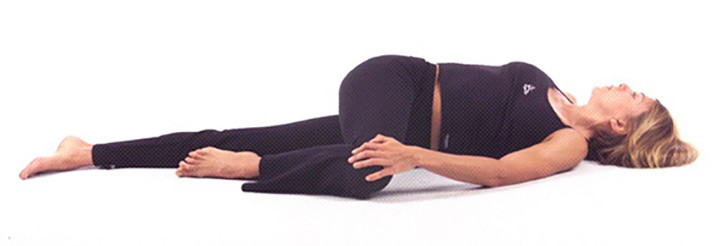
- Lying Spinal Twist
The stretch exercise is the best way to release, stretch, & decrease pain along the side of the back and spine as well. These muscles are most likely tight on everyone, as the individuals are affected by everyday activities.
It is a more advanced stretch, as it may feel intense for those with tight back muscles or even a lack of mobility. If the person deals with chronic back pain, they may need to work the way through some of the other back stretches before progressing to this one. For this stretch, they will need the space to lie down & extend the arms on the flat surface, once a day on each side. Embark by lying on the back, with both legs extended straight out, & the arms out in a T for the beginning position. Pick the right leg up to the ninety-degree angle, parallel to the roof as well as place the left hand on the right knee. Gradually twist the right leg to the left side of the body, while turning the head to the right. Make sure to stop when the patient feels the light stretch, as well as ease slowly into the deeper stretch.
Allow gravity to pull the knee towards the ground, while keeping the right arm as well as both shoulders on the ground.
Hold till the spine has released & repeat on the opposite side. - Standing Quad Stretch
Stand with both feet together. Lift one foot behind you, hold it with both the hands & pull the heel toward the buttock. After that, hold for about ten seconds. Repeat with the other foot as well. Do it three times per day.

- Standing Side Stretch
Standing with the feet together, lift the arms overhead. Clasp the hands as well as interlace the fingers. Inhale & reach upward, & while exhaling bend the upper body toward the right. Hold for 10 seconds. Exhale & return to the embarking position & repeat on the left side too. Perform three repetitions per day.

- Seated Hamstring Stretch
Sit on the ground & extend the right leg in the front. Bend the left leg with the sole placed against the inner thigh. Lean forward & reach for the ankle as far as the patient can & pull the toe toward the body. Hold for five seconds & repeat with the other leg. Do three repetitions per day.
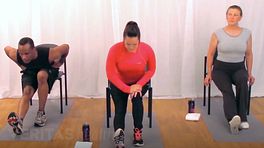
- Standing Calf Stretch
Stand about three feet from the wall as well as place the palms flat on a wall, shoulder-width apart. Place the right foot behind the patient with toes facing forward. Keep the right knee straight, heel on the floor & lean forward. Hold for a few seconds & repeat with the other leg. Do three repetitions per day.

- Shoulder Stretch
Stand straight as well as grab one elbow with the opposite hand & pull the elbow across the chest. Hold for a few seconds & repeat on the other side. Do it ten times per day.

- The Forward Hang
Stand with the feet hip-width apart as well as knees slightly bent. Interlace the fingers behind the back. Inhale as well as extend the arms. Bend at the waist while exhaling & extend the hands toward the head. Hold for ten seconds. Do it three times per day.

- Backstretch
Go on the ground, on fours with the knees and hands as well. While inhaling curl the back up toward the roof. Hold this position for a few seconds & come back to the embarking position. Push the tummy toward the ground dipping the back & hold for a few seconds. - Butterfly Groin Stretch
Sit on the ground upright, bend the knees, press the soles of the feet together, & pull them toward the groin. Grasp the feet, drop the knees to the sides & gently apply pressure till you feel the stretch on the groin & inner thighs. Turn the chest to the left & then right.

- Split Squat
First of all, stand with feet hip-width apart. Place the right foot in the front. Keep the hands under your ribs and interlace the fingers. Squeeze the glutes, tighten the muscles of the pelvic floor & tuck the pelvis in. Bend both knees slowly as well as come down till the count of three. Pressing into the ground, return up to a count of three. Switch legs & repeat. Perform three times per day.
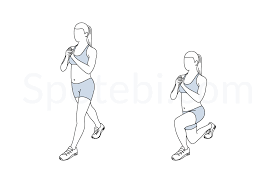
- Modified Cobra
Lie on the tummy (prone)on the floor with thumbs right under the shoulders & feet extended. Squeeze the glutes, tighten the pelvic floor as well as tuck the pelvis in. Raise the chest pushing through the thumb and index finger as well. Hold for ten seconds before coming back to the beginning position. Do three repetitions per day.

- Standing Hamstring Stretch
Stand tall with both feet hip-width apart, knees slightly bent, and arms by the sides. Exhale as you bend forward at the hips, lowering the head toward the ground while keeping the head, neck, as well as shoulders relaxed. Wrap the arms around the backs of the legs & hold anywhere from 45 seconds to 2 minutes. Do three repetitions per day. - Piriformis Stretch
To start with, sit on the floor with both legs extended in front of you. Next, cross the right leg over the left, & place the right foot flat on the ground. After that, place the right hand on the ground behind the body. Then, place the left hand on the right quad or the left elbow on the right knee & press the right leg to the left as you twist the torso to the right. If the spinal rotation bothers the back, take it out as well as simply use the left hand to pull the right quad in & to the left. Stretches hips, back, and glutes. Do three times per day with 30 seconds of hold.

- Lunge With Spinal Twist
To embark by standing with the feet together. Then, take a big step forward with the left foot, so that the patient is in a staggered stance. After that, bend the left knee & drop into the lunge, keeping the right leg straight behind you with the toes on the floor, so the patient feels the stretch at the front of the right thigh. Next, place the right hand on a floor as well as twist the upper body to the left as you extend the left arm toward the ceiling. Hold for 30 seconds – 2 minutes. Repeat on the other side as well. Do three repetitions per day.
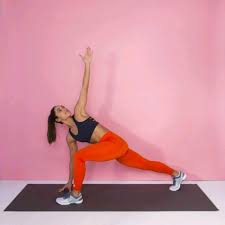
- Triceps Stretch
The triceps stretching exercise is one of the most popular upper-body stretches, which loosens up the muscles on the back of the upper arms, making it great to do after the chest or even shoulders workout.
Kneel, sit, or even stand tall with feet hip-width apart, arms extended overhead. After that, bend the right elbow as well as reach the right hand to touch the top middle of the back. Then, reach the left-hand overhead & grasp just below the right elbow. Next, slowly pull the right elbow down as well as toward the head. Switch arms as well as repeat. Stretches neck, shoulders, back, and triceps as well. Do three repetitions per day.

- Figure Four Stretch
First of all, lie on your back with both feet flat on the ground. After that, cross the left foot over the right quad. Lift the right leg off the floor. Then, grab onto the back of the right leg and gently pull it toward the chest. When the patient feels the comfortable stretch, hold there. Hold for around 30 seconds to 2 minutes. Switch sides and do it three times per day.
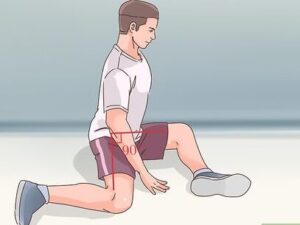
- 90/90 Stretch
This modification of pigeon pose assists with internal rotation of one leg as well as external rotation of the other, “so the patient is hitting both motions of the hip at once. It is a good option for individuals who have extremely tight hip flexors. “A front thigh is safely and gradually on the ground in the position that does not cause too much stress.”
To begin with, sit with the right knee bent at 90 degrees in front of you, the calf perpendicular to the body as well as the sole of the foot facing to the left. Next, keep the right foot flexed. Then, let the leg rest flat on the ground. Place the left knee to the left of the body, & bend the knee so that that foot faces behind you. Keep the left foot flexed. Keep the right butt cheek on the ground. Try to move the left cheek as close to the ground as possible. It may not be possible if the patient is super tight. Hold for 30 seconds – 2 minutes. Repeat on the other side also. Do three repetitions per day.
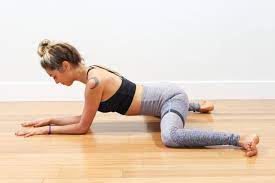
- Frog Stretch
Start on all fours. After that, slide the knees wider than shoulder-width apart. Next,
turn the toes out as well as rest the inner edges of the feet flat on the ground. After that, shift the hips back toward the heels.
Move from the hands to the forearms to get a deeper stretch, if possible. Hold the position for 30 seconds -2 minutes. Do three repetitions per day. - Butterfly Stretch
Sit tall on the ground with the soles of the feet together, and knees bent out to the sides. After that, hold onto the ankles or even feet, engage the abs, & slowly lower the body toward the feet as far as you can while pressing the knees toward the ground.
If the patient is too tight to bend over, simply press the knees down. Hold the stretch for 30 seconds – 2 minutes. Stretches hips, glutes, back, and thighs as well. Bend the knees & roll up when the patient did. Do it three times per day. - Seated Shoulder Squeeze
To begin with, sit on the ground with the knees bent & feet flat on the ground. After that, clasp the hands behind the lower back. Then, straighten as well as extend the arms & squeeze the shoulder blades together. Next, do this for ten seconds and then release. Repeat ten times. Stretches chest, shoulders, and upper back as well. Do three sessions in a day.
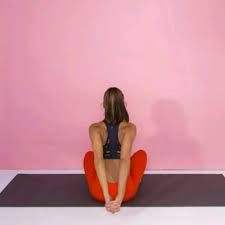
- Side Bend Stretch
Kneel on the ground with the legs together, back straight, as well as core tight. Then, extend the left leg out to the side. Next, keep it perpendicular to the body. After that, extend the right arm overhead, rest the left arm on the left leg, & gently bend the torso & right arm to the left side. Keep the hips facing forward. Hold the stretch for 30 seconds – 2 minutes. Repeat on the other side also. Stretches groin, hips, inner thigh, as well as obliques. - Lunging Hip Flexor Stretch
To start with, kneel on the left knee. Place the right foot flat on the ground in front of you, knee bent. After that, lean forward, stretching the left hip toward the ground. Then, squeeze the butt; this will allow you to stretch the hip flexor even more. Next, hold for 30 seconds to 2 minutes. Switch sides & repeat. Stretches hips, quads, and glutes. Do three repetitions per day.

- Pectoral stretching
To embark with, lie on the stomach with both arms extended to the sides so the body is in a T shape. Next, push off the floor with the left hand & bend the left knee for balance as the patient start to roll to the right side. The patient should feel this in the right-side pectoral muscles. As the mobility increases, the patient will be able to stretch further & roll the body further. Repeat on the other side as well. Do three repetitions per day.
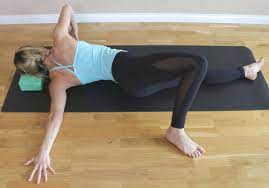
- Knee to Chest Stretch
Lie on the back with both legs extended. After that, pull the right knee into the chest, while keeping the left leg straight as well as the lower back pressed into the ground. Then, hold for 30 seconds to 2 minutes. Repeat on the other leg also. Stretches lower back, hips, as well as hamstrings. Do three sessions per day.

- Seated Neck Release
To begin with, stand with feet shoulder-width apart, or even sit down with the back straight as well as chest lifted. Next, drop the left ear to the left shoulder. Then, to deepen the stretch, gently press down on the head with the left hand. After that, hold for 30 seconds to 2 minutes in one repetition. Do three repetitions per day. - Side-Lying Quad Stretch
To embark with, lie on one side. After that, keep the bottom leg straight as well as bend the top knee so the foot is by the butt. Next, hold the top foot with the hand, pulling it toward the butt. Then, keep the hips stable so the patient is not rocking back as you pull. Hold for 30 seconds to 2 minutes in one repetition. Do three repetitions per day. Switch sides & repeat. Stretches quads.
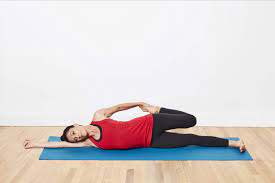
- Sphinx Pose
First of all, lie on your stomach with the legs straight out behind you. Then, place the elbows under the shoulders as well as the forearms on the ground as you lift the chest up off the ground. After that,
press the hips & thighs into the ground, & think about lengthening the spine while keeping the shoulders relaxed. Next,
sit up just enough to feel the nice stretch in the lower back. Do not hyperextend, & stop immediately if the patient starts to feel any discomfort or even pain. Stretches lower back, chest, and shoulders. Do it three times per day.
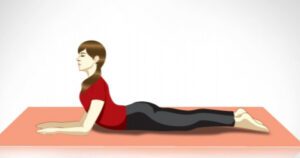
- Extended Puppy Pose
Begin on all fours. Next, walk the arms forward a few inches as well as curl the toes under. Next, push the hips up as well as back halfway toward the heels. After that, push through the palms of the hands to keep the arms straight and engaged as well. Hold for around 30 seconds – 2 minutes. Stretches back, shoulders, and glutes. Do it three times per day.
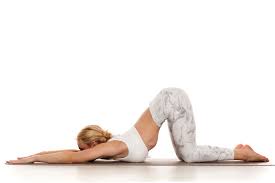

- Pretzel Stretch
First of all, the therapist tells the patient to lie on the left side with the head resting on the arm. After that,
bend the right knee & hip up toward the chest as far as the patient can, & let it drop to the ground. Next, bend the left knee & grab the left foot (use a strap if the patient cannot reach it) with the right hand. Make sure the leg & torso remain in a straight line as the patient gently brings the top shoulder blade toward the ground. For more of the spinal twist, turn the head to look over the right shoulder. Stretches quads, glutes, obliques, hips, as well as back. Do it three times per day.
- Reclining Bound Angle Pose
To embark with, the therapist gives the instruction to the patient that lies on the back. Next, bring the soles of the feet together as well as allow the knees to open up & move closer to the floor. Then, hold for 30 seconds – 2 minutes.
Stretches inner thighs, hips, as well as groin. Do it three times per day.
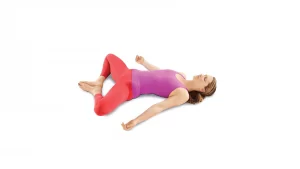
- Standing Quad Stretch
First of all, the patient should stand with the feet together. Then,
bend the left knee & use the left hand to pull the left foot toward the butt. Next, keep the knees together. After that, If the patient needs to, put one hand on the wall for balance. Squeeze the glutes to increase the stretch in the front of the legs. Hold for 30 seconds – 2 minutes. Repeat on the other leg also. Stretches quads. Do it three times per day. - Knees to Chest
To start with, the physical therapist tells the patient that lies on the back & pulls the knees into the chest with both hands. After that, keep the lower back on the ground. Then, hold for 30 seconds – 2 minutes. Stretches lower back and glutes. Perform three times per day. - Seated Shoulder Squeeze
First of all, the patient may sit down comfortably on the floor with the knees bent as well as placed together. Clasp the hands behind the lower back & straighten and extend the arms. Squeeze the shoulder blades together & bend the head forward. Do it for 30 seconds and then release. Do it three times per day. - Standing Hamstring Stretch
In the standing position, find something to hold for the balance. After that, put one straightened leg up on the step or the block. next, bend slightly (not beyond the toes) with the opposite knee till the patient feels the gentle stretch at the back of the thigh of the raised leg. Bend slightly forward from the hips if the patient needs more stretch. Move slowly & evenly, without bouncing. Hold the action for 20 to 30 seconds and switch legs as well. Do it three times per day.

- Sideways Neck Stretch
Stand with the feet hip-width apart. Tighten the belly as well as pull the shoulders back. Next, with the head slightly forward, slowly tilt the ear toward the shoulder on the same side till the patient feels the stretch. Hold it for about thirty seconds, & slowly bring the head back up as well as do the other side. The patient can increase a stretch by using the hand on the tilting side to gently pull the head down. - Chest and Shoulder Stretch
To start with, the patient can sit or even stand & clasp the hands together behind the back, arms straight. After that,
lift the hands towards the roof, going only as high as is comfortable. Then, the patient should feel the stretch in the shoulders & chest.
Hold the position for 30 seconds, repeating one to three times. If the shoulders are a little tight, then try just taking the arms behind you & out to the sides like the airplane. - Upper Back Stretch
Clasp the hands together in front of the patient & round the back, pressing the arms away from the body to feel the stretch in the upper back. After that, contract the abs to get the most out of this stretch. Then, hold for 30 seconds, repeating one to three times as well.

- Biceps Stretch
First of all, take the arms out to the sides, slightly behind you, with the thumbs up, like the hitchhiker. After that,
rotate the thumbs down & back till they are pointing to the back wall to stretch the biceps muscle. Then, hold for 30 seconds, repeating one to three times.

- Shoulder Stretch
To begin with, take the right arm straight across the chest & curl the left hand around the elbow, gently pulling on the right arm to deepen the stretch in the shoulders. After that, try dropping the shoulder down if the patient is not feeling the stretch. Hold for 30 seconds and switch sides, repeating three times on each side in a day.


- Runner’s stretch
The stretch is great for the lower body, especially for the hamstrings and hip flexors. Tight hamstrings muscle are often the culprits of low back pain. It may be worse in individuals who sit for extended periods of time.
Equipment needed: No one
Muscles used: Hamstrings, hip flexors, low back, & calves.
To start with, stand with both feet hip-width apart. Next, step back with the left leg as well as place both of the hands on the floor on either side of the right foot, about shoulder-width apart. Then, lower the hips until the patient feels the stretch in the front of the left hip and leg. Hold it for 30 seconds. Gradually, straighten the front leg, keeping the hands planted on the ground. Do not worry if the patient cannot get the leg completely straight. Hold it for 30 seconds. Repeat on the other side also. Do it three times per day.
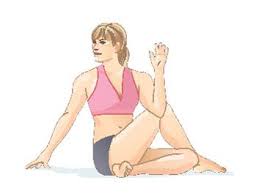
- Seated back twist
Spinal twists are a great release exercise: They can assist to improve back pain as well as increase mobility. If the patient has any disk or even spinal problems that can worsen with twisting, skip this exercise.
Equipment required: none.
Muscles worked: Erector spinae, glutes, and low back muscles.
To begin with, the physical therapist tells the patient to sit on the ground, legs crossed with the left leg on top. Next,
cross the left leg further over the right leg, placing the foot on the floor by the right knee so that the left knee is pointing upward. After that, gradually twist the shoulders toward the left, pushing against the left leg for leverage. Only go as long as comfortable. Hold the position for thirty seconds. Do it three times per day. Repeat on another side as well.
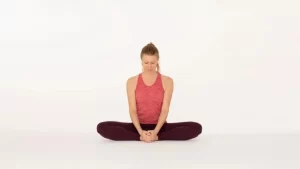
- Bound angle
The hip-opening stretch is effective for both men & women. These assists reduce tension in the hips & muscles on the inside of the thighs.
Equipment required: None.
Muscles worked: Adductors, hip flexors, as well as glutes.
To embark with, the patient sits on the floor, back straight, and keeps the soles of the feet touching. After that,
place the hands on the feet as well as lengthen through the spine. Feel as if there is the string pulling the head to the roof & shift the weight forward of the tailbone. Next, using the arms to help, lean forward with the flat back, bringing the head toward the feet. Only go as long as comfortable. Hold the position for thirty seconds. Do it three times per day. - Chest stretch in the door
Tightness in the chest, as well as shoulders, is often found in individuals with poor posture. This may lead to bigger issues later in life. Doing daily chest-opening stretches may assist prevent tightness & promote proper posture & better breathing.
Equipment required: Doorway
Muscles worked: Chest, anterior deltoid, and biceps
To start with, the physical therapist gives the instruction to the patient that stands in the middle of the open door. After that,
place the forearms on each side of the doorframe, if possible. If a doorway is too wide, do one arm at a time. Next,
gradually lean forward into a doorway till the patient feels the stretch through the front of the chest as well as shoulders.
Only go as long as comfortable. Hold the action for thirty seconds. Do three times per day and repeat on the other side as well.


